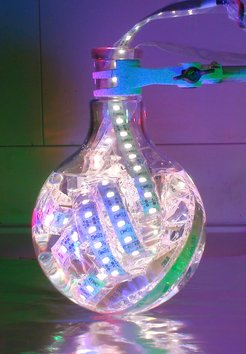Chemists use photocatalyst from urea
Carbon nitride enables more efficient and environmentally friendly reaction pathways

Photosynthesis or “Chemistry with Light”: what is shown in Nature and plants has seen a renaissance in synthetic chemistry and evolved into a valuable tool for academic and industrial generation of molecules. In photosynthesis, it is not only about the generation of sugars or biomass, but lab work has shown up that completely new reaction modes become possible, such as the simultaneous activation of two reagents or the formal insertion of whole molecules into chemical bonds. With this approach, synthetic chemistry can turn simpler, environmentally more benign, and one can design completely new synthetic pathways to otherwise very complicated target structures.
Many different metal complexes and organic dyes are currently used as photocatalysts, but their limited stability and difficult recycling limit a broader application. In addition, these metal complexes are mostly built up from two of the rarest metals on Earth, Ruthenium and Iridium. This massively restricted a more general use.
Chemists of the University of Regensburg and the Max Planck Institute of Colloids and Interfaces in Potsdam report now the use of a two-dimensional material composed of carbon and nitrogen atoms, carbonnitride, as photocatalyst in organic synthesis. This material can for instance be made from urea, is therefore very cheap, and was previously mainly used in energy conversion applications, but obviously it also has a lot to offer for organic synthesis. Its physical properties allow replacing most common molecular photocatalysts by a single compound, and the remarkable stability and heterogeneous nature of the material allow for enduring use.
This work now shows that the use of organic semiconductors, such as carbon nitride, will enable an even broader application of light as an efficient and safe reagent in organic synthesis and enables perspectives for photocatalyzed reactions even on an economic, larger scale. Like that, “light in the reaction” can help to make chemistry more efficient, sustainable, environmentally benign, and thereby also more simple.
